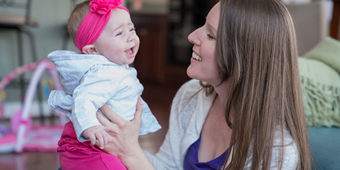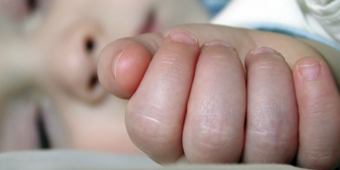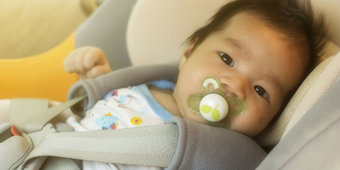Protect Your Child from Shaken Baby Syndrome

Answer a few questions and we'll provide you with a list of primary care providers that best fit your needs.
When babies cry and cry, for seemingly no reason, it can become completely overwhelming for a caregiver.
As a parent, if this happens to you, there are several acceptable ways to cope. Ask a friend for help, hire a babysitter or share your feelings with a trusted friend or family member.
If you feel out of control and fear you might hurt your child, the best thing to do is to place the baby in a safe spot (such as a crib), leave the room and take a short break to regain composure. It’s OK if your baby continues to cry, because crying won’t harm your child.
How Does Shaken Baby Syndrome Happen?
Shaken Baby Syndrome occurs when a parent or caregiver completely loses control. In many cases, the caregiver did not intend to hurt the baby, but shook him in an effort to punish or quiet him. It is never safe to shake a child: just five seconds or more of vigorous shaking by the shoulders, arms or legs can result in serious lifelong injuries, disabilities or death.
It is never safe to shake a child: just five seconds or more of vigorous shaking by the shoulders, arms or legs can result in serious lifelong injuries, disabilities or death.
Damaging Effects of Shaken Baby Syndrome
Shaking an infant or toddler causes the child’s brain to slam back and forth against the skull. This can result in bruising, swelling, pressure and bleeding of the brain. The effects of Shaken Baby Syndrome are severe, including the following:
- Death
- Mental retardation
- Developmental delays
- Paralysis
- Severe motor dysfunction
- Spasticity
- Blindness
- Seizures
If you suspect that your child has been shaken, call 911 immediately. The signs of brain damage may include:

- Trouble breathing
- Vomiting
- Change in sleeping pattern
- Inability to be awakened
- Confused, restless, irritable or agitated state
- Convulsions or seizures
- Lethargy
- Slurred speech
- Uncontrollable crying
- Inability to nurse, eat or be consoled
How to Avoid Shaken Baby Syndrome
Let everyone who cares for your child know about the risks of Shaken Baby Syndrome and how to avoid it. Practice the following to keep your child safe:
- When you’re upset, calm yourself down by taking a deep breath and counting to 10.
- Place your baby in a safe area, such as a crib, and leave the room for up to 15 minutes to take a break. It’s OK if you baby keeps crying, because crying won’t harm your child. If you need a longer break, call a trusted friend, family member or babysitter for help watching your child.
- Get the emotional support you need by talking with a friend.
- Check in with a doctor to see if there’s a medical reason why your baby is crying.
- Stay in control by taking deep breaths, talking to yourself to stay calm, and handling your baby with care, even if you feel frustrated.
Answer a few questions and we'll provide you with a list of primary care providers that best fit your needs.
Source: American Academy of Pediatrics; Centers for Disease Control and Prevention; Medline Plus




